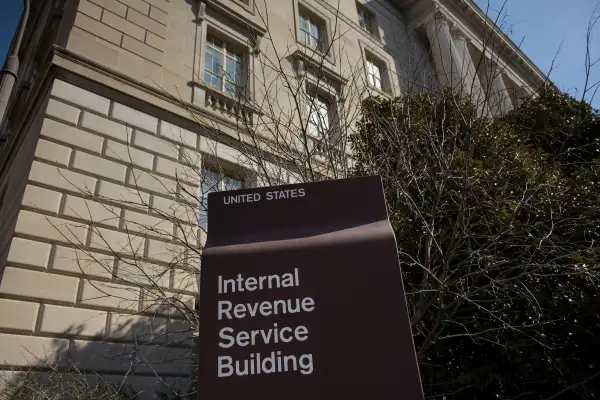Every Retiree Should Make This Tax Move Right Now, According to a New Warning From the IRS

The IRS has a message for retirees: make sure you're paying enough federal income tax. The Tax Cuts and Jobs Act of last December changed the income tax calculations for most filers, and employees aren't the only ones who need to double check they're withholding the right amount.
The GOP tax bill lowered the top individual rate to 37% from 39.6%, and the income brackets dropped slightly -– by about 3%, says Chris Baker, a certified financial planner at Oaktree Financial Advisors in Carmel, Indiana. This means that on average most retirees will likely see a decrease in tax liability and owe slightly less, although it varies by individual circumstances, he says.
Retirees who receive monthly pension income or annuity checks may well need to increase or lower the amount of taxes they pay. While most retirees prefer withholding taxes from each paycheck to give Uncle Sam his due, those who choose to receive the full amount in each check and then make estimated payments to the IRS must do so four times a year by the quarterly deadlines. The third quarter deadline was Sept. 17, and the next is Jan. 15, 2019.
Withholding too much from each check could result in an outsized refund, while withholding too little could mean you owe the IRS next spring. “Make sure you don’t have a large balance due, because it’s possible you could be penalized for underpaying your estimated tax,” says April Walker, lead manager for tax practice and ethics at the American Institute of CPAs.
The easiest way to simplify your tax payments and get back to enjoying retirement is to use the IRS’ online withholding calculator, which incorporates the new tax law rule changes. Like employees who receive wages, retirees can use this tool to estimate their total income, deductions, and tax credits for 2018.
Retirees should treat their pension or annuity checks like income from a job by entering the payment amounts and how often they receive them. Based on this information, the calculator recommends the number of allowances each recipient should claim. You can change your withholding at any time by contacting your payer and submitting a new W-4P form.
Make sure to factor Social Security into your expected retirement income, Baker says. New retirees with mixed sources of income that differ from last year may need additional help from a CPA or tax advisor.
With limited time left in 2018, some retirees may not be able to cover their expected tax liability through withholding alone, and will need to make an estimated or additional payment to the IRS. If you missed the third quarter deadline, you can still catch up and make payments by the fourth quarter if your withholding won't cover your tax liability, Walker says.
“Even if you’ve already looked at your withholding one time, it’s a good idea to check again to make sure you don’t get penalized and are paying the right amount," Walker says.